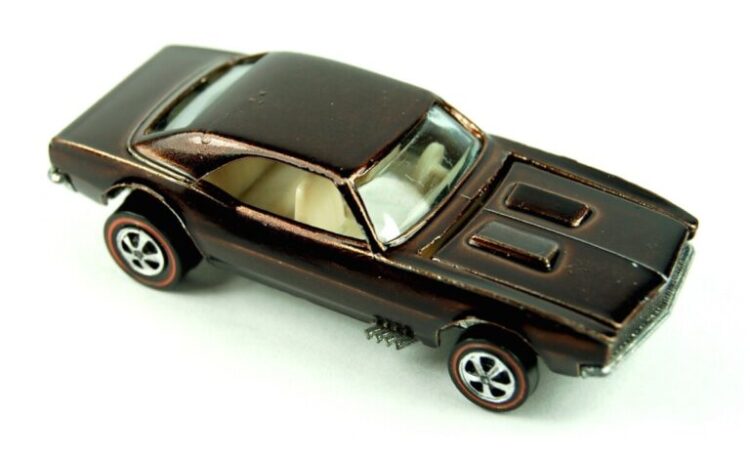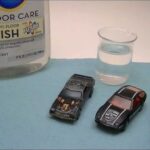Determining the Value of Hot Wheels Cars: A Comprehensive Guide
Hot Wheels cars have been a staple of childhood playrooms and collector showcases since their introduction by Mattel in 1968. What began as simple die-cast toy cars has evolved into a complex and fascinating world of collectibles. Whether you are a seasoned collector or a newcomer, understanding how to determine the value of Hot Wheels cars can be both challenging and rewarding. This guide will explore the various factors that influence the value of Hot Wheels cars, providing you with the knowledge you need to evaluate your collection or make informed purchases.
The History and Evolution of Hot Wheels
Before delving into valuation, it’s essential to understand the history and evolution of Hot Wheels cars. This background provides context for why certain cars are more valuable than others.
The Early Years (1968-1977)
Hot Wheels cars were introduced in 1968, with the original 16 cars, known as the “Sweet 16,” becoming instant hits. These early models featured unique designs, Spectraflame paint, and Redline tires, making them highly sought after today. The cars were designed to be faster and more detailed than their competitors, setting a new standard in the die-cast toy market.
The Redline Era (1968-1977)
The Redline Era is named after the red lines on the tires of Hot Wheels cars produced during this period. This era is particularly significant for collectors due to the iconic design and the introduction of many popular models. The cars from this era, especially those in mint condition, are among the most valuable in the Hot Wheels market.
The Blackwall Era (1977-1994)
In 1977, Hot Wheels cars transitioned to Blackwall tires, marking the end of the Redline Era. The Blackwall Era saw the introduction of many new models and design innovations. While not as valuable as Redline cars, Blackwall cars still hold significant value, especially rare models and variations.
The Modern Era (1995-Present)
Since the mid-1990s, Hot Wheels has continued to innovate, introducing new series, collaborations, and limited editions. The value of modern Hot Wheels cars varies widely, with some limited editions and special releases becoming highly prized by collectors.
Factors Influencing the Value of Hot Wheels Cars
Several factors influence the value of Hot Wheels cars, including rarity, condition, age, packaging, and specific model characteristics. Understanding these factors will help you accurately assess the value of your Hot Wheels collection.
Rarity
Rarity is one of the most critical factors in determining the value of a Hot Wheels car. The fewer the number of a particular model or variation, the higher its potential value. Rarity can be influenced by several factors, including:
- Limited Editions: Hot Wheels frequently releases limited edition cars, often in collaboration with other brands or to commemorate special events. These limited runs can become highly sought after.
- Production Errors: Cars with production errors, such as misprinted graphics or incorrect parts, can become valuable due to their unique nature.
- Discontinued Models: Models that were produced for a short time and then discontinued can also become rare and valuable.
Condition
The condition of a Hot Wheels car significantly impacts its value. Collectors typically use a grading scale to evaluate condition, ranging from mint to poor. Key aspects to consider include:
- Paint Quality: Scratches, chips, or fading paint can decrease a car’s value.
- Decals and Graphics: Intact and vibrant decals or graphics are preferred.
- Wheels and Axles: Wheels should be free of damage and roll smoothly.
- Overall Wear: Cars that show minimal signs of play or handling are more valuable.
Age
Generally, older Hot Wheels cars tend to be more valuable, especially those from the Redline and early Blackwall eras. Age alone does not determine value, but older cars in good condition can command higher prices due to their historical significance and rarity.
Packaging
Original packaging can significantly enhance the value of a Hot Wheels car. Collectors often seek cars that are still in their original blister packs, as this indicates they have not been played with and are likely in mint condition. Factors to consider regarding packaging include:
- Condition of Blister Pack: The blister pack should be free of cracks, tears, and yellowing.
- Unopened Packs: Unopened packs are more valuable than those that have been opened, even if the car inside is in good condition.
Specific Models and Variations
Certain Hot Wheels models and variations are more valuable due to their popularity, unique design, or historical significance. Some notable examples include:
- Sweet 16: The original 16 Hot Wheels cars are highly prized by collectors.
- Treasure Hunts: Introduced in 1995, Treasure Hunts are limited edition cars released annually. Super Treasure Hunts, a rarer version with premium features, are particularly valuable.
- Special Editions: Collaborations with brands, movies, or special themes can produce highly collectible models.
Researching and Identifying Valuable Hot Wheels
Determining the value of a Hot Wheels car requires thorough research and identification. Here are some steps to help you in the process:
Step 1: Identify the Car
Start by identifying the make, model, and year of your Hot Wheels car. Look for markings on the bottom of the car, which often include the model name, manufacturing year, and country of origin.
Step 2: Check for Variations
Once you have identified the car, check for any variations. Variations can include differences in paint color, wheel type, decals, and packaging. These variations can significantly affect value, so it’s essential to note any unique features.
Step 3: Research Market Trends
Research current market trends to see how similar models are being valued. Online marketplaces, auction sites, and collector forums are excellent resources for gauging market value. Pay attention to the condition and packaging of the cars being sold, as these factors will impact price comparisons.
Step 4: Consult Price Guides and Databases
Several price guides and online databases are available to help you determine the value of your Hot Wheels cars. Some popular resources include:
- Tomart’s Price Guide to Hot Wheels
- South Texas Diecast Collectors Guide
- Hot Wheels Wiki
- eBay Sold Listings
These guides provide detailed information on various models, including estimated values based on condition and rarity.
Tips for Maximizing the Value of Your Collection
If you are a collector looking to maximize the value of your Hot Wheels collection, consider the following tips:
Store Cars Properly
Proper storage is crucial to maintaining the condition and value of your Hot Wheels cars. Keep cars in a cool, dry place, away from direct sunlight, which can cause paint to fade. Use protective cases or display cabinets to prevent dust and damage.
Keep Original Packaging
Whenever possible, keep cars in their original packaging. Unopened blister packs are particularly valuable. If you need to open a package, do so carefully to preserve the packaging for potential future resale.
Document Your Collection
Maintain detailed records of your collection, including information on each car’s make, model, year, condition, and any unique features. Photographs can also be helpful for documentation and insurance purposes.
Stay Informed
Stay up to date with the latest trends and developments in the Hot Wheels collecting community. Join collector forums, attend swap meets, and subscribe to newsletters or magazines. Networking with other collectors can provide valuable insights and opportunities.
Buy and Sell Strategically
When buying or selling Hot Wheels cars, do so strategically. Look for opportunities to purchase undervalued cars that have the potential to increase in value. When selling, highlight the unique features and condition of your cars to attract serious buyers.
Case Studies: Notable Hot Wheels Cars and Their Values
To illustrate the principles discussed, let’s examine some notable Hot Wheels cars and their values:
1969 Pink Rear-Loading Beach Bomb
The 1969 Pink Rear-Loading Beach Bomb is one of the most valuable Hot Wheels cars ever produced. With only a few prototypes known to exist, this car can fetch upwards of $100,000 in mint condition. Its value is driven by its rarity, unique design, and historical significance as a prototype model.
1971 Purple Olds 442
The 1971 Purple Olds 442 is a highly sought-after model, particularly in mint condition with its original packaging. This car can be valued at several thousand dollars, depending on its condition and packaging. The combination of its rarity, popular casting, and distinctive color contributes to its high value.
1995 Treasure Hunt Series
The introduction of the Treasure Hunt series in 1995 added a new dimension to Hot Wheels collecting. The cars from the original 1995 series, especially the Camaro and VW Bug, are highly prized by collectors. These cars can range in value from a few hundred to several thousand dollars, depending on condition and packaging.
Conclusion
Determining the value of Hot Wheels cars requires a combination of research, knowledge, and attention to detail. By understanding the factors that influence value, staying informed about market trends, and carefully documenting and preserving your collection, you can maximize the potential value of your Hot Wheels cars. Whether you are a seasoned collector or just starting, the world of Hot Wheels offers endless opportunities for discovery and enjoyment.









